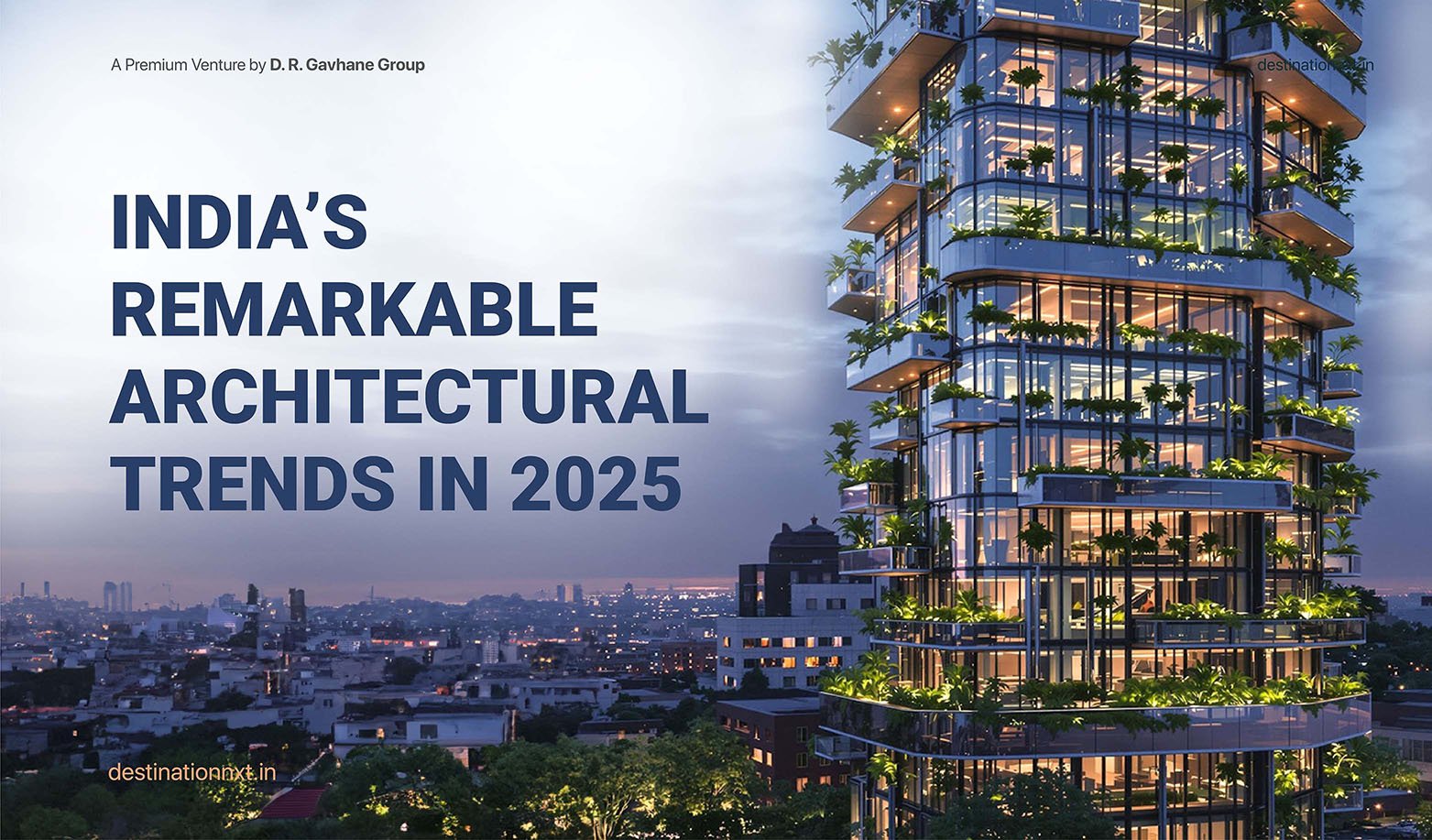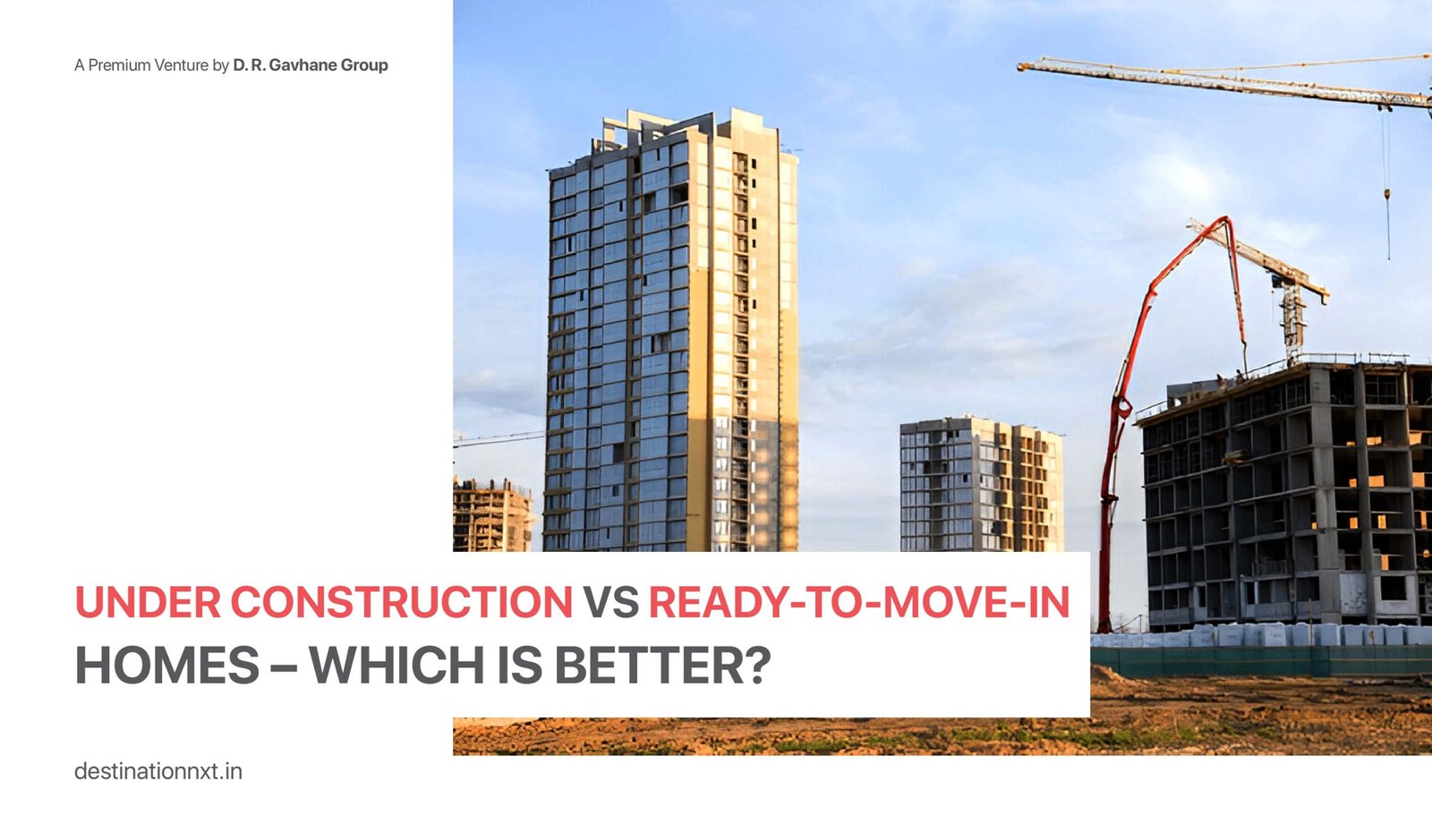
India’s Remarkable Architectural Trends in 2025
nxtadmin
- 0
With the evolution of India’s real estate and construction fields, architecture has come to the forefront in shaping up sustainable, intelligent, and nature-centric, and culturally relevant buildings.
In 2025, modern architecture in India is witnessing a remarkable transformation, driven by technology, eco-consciousness, and a creative blend of tradition and innovation. Let’s explore the top modern architecture trends in India for 2025, especially for those eying a property in Pune.
Sustainable Architecture: Building Responsibly
With growing awareness of climate change and resource conservation, sustainable architecture is a necessity. Indian architects are focusing on designing energy-efficient buildings that reduce carbon footprints. 2025’s architectural approach prioritizes the following:
- Passive cooling techniques
- Natural light and ventilation
- Green rooftops
- Rainwater harvesting systems
- Solar panels
Cities like Pune, with their growing eco-conscious population, are embracing these ideas faster than ever.
Eco-Friendly Materials: Purposeful Construction
Indian architecture is shifting from conventional materials to eco-friendly materials such as fly ash bricks, bamboo, rammed earth, recycled wood, and low-VOC paints.
These materials minimize environmental impact and in addition, offer durability and aesthetic value. Developers focusing on premium property in Pune are adopting these materials to offer homebuyers spaces that are both beautiful and responsible.
Smart Homes and Technology Integration: Futuristic Life
Smart homes and technology integration are the highlights of modern living. In 2025, Indian homes are enhanced with smart lighting, temperature control, voice-activated assistants, and energy monitoring systems. This fusion of tech and architecture enhances daily life and raises property value significantly.
Home Automation: Convenience and Security
Home automation results in enhanced security. Automated locks, video doorbells, surveillance cameras, and motion sensors offer peace of mind. Combined with smart energy systems, these features make homes both safe and efficient. In rapidly urbanizing areas like Pune, where high-rise living is popular, such automated solutions are in high demand for their dual promise of convenience and security.
Biophilic Design: Bringing Nature Indoors
A popular trend in 2025 is biophilic design that seeks to reconnect people with nature. This includes incorporating indoor plants, natural light, green walls, water features, and earthy textures within the home. Biophilic elements not only improve mental health and productivity but also align with Indian cultural values that prioritize harmony with nature
Fusion of Traditional and Modern Styles: Exclusive and Exotic
India’s rich architectural heritage is now being blended with contemporary design principles. This fusion of traditional and modern styles reflects in the combinations such as jaali work with glass facades, courtyards with minimalist interiors, and sloping roofs with solar panels. Such designs appeal to homeowners who want cultural identity without compromising on modern comforts.
Time Efficiency and Cost Savings Through Modular Design
Today values such as time efficiency and cost savings are valued. Modular construction methods and prefabricated materials help reduce build times without sacrificing quality. Architects are designing layouts that maximize space utilization, making homes more practical and budget-friendly.
For both developers and buyers, this trend ensures better ROI and faster project turnovers, a win-win in the competitive property market.


